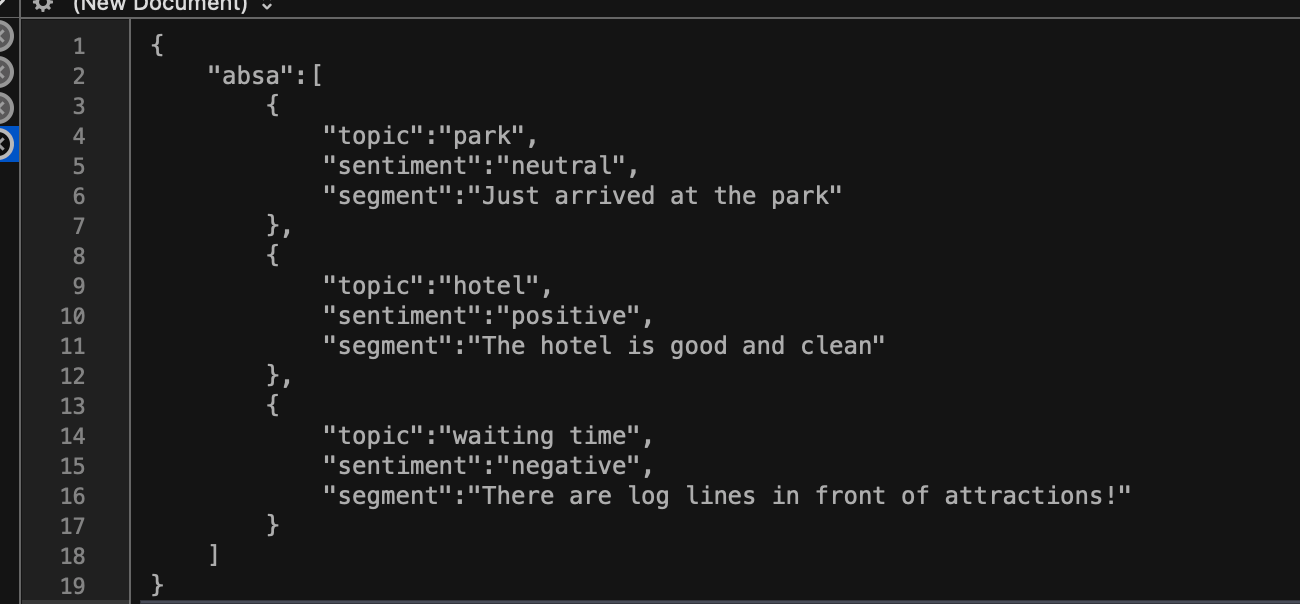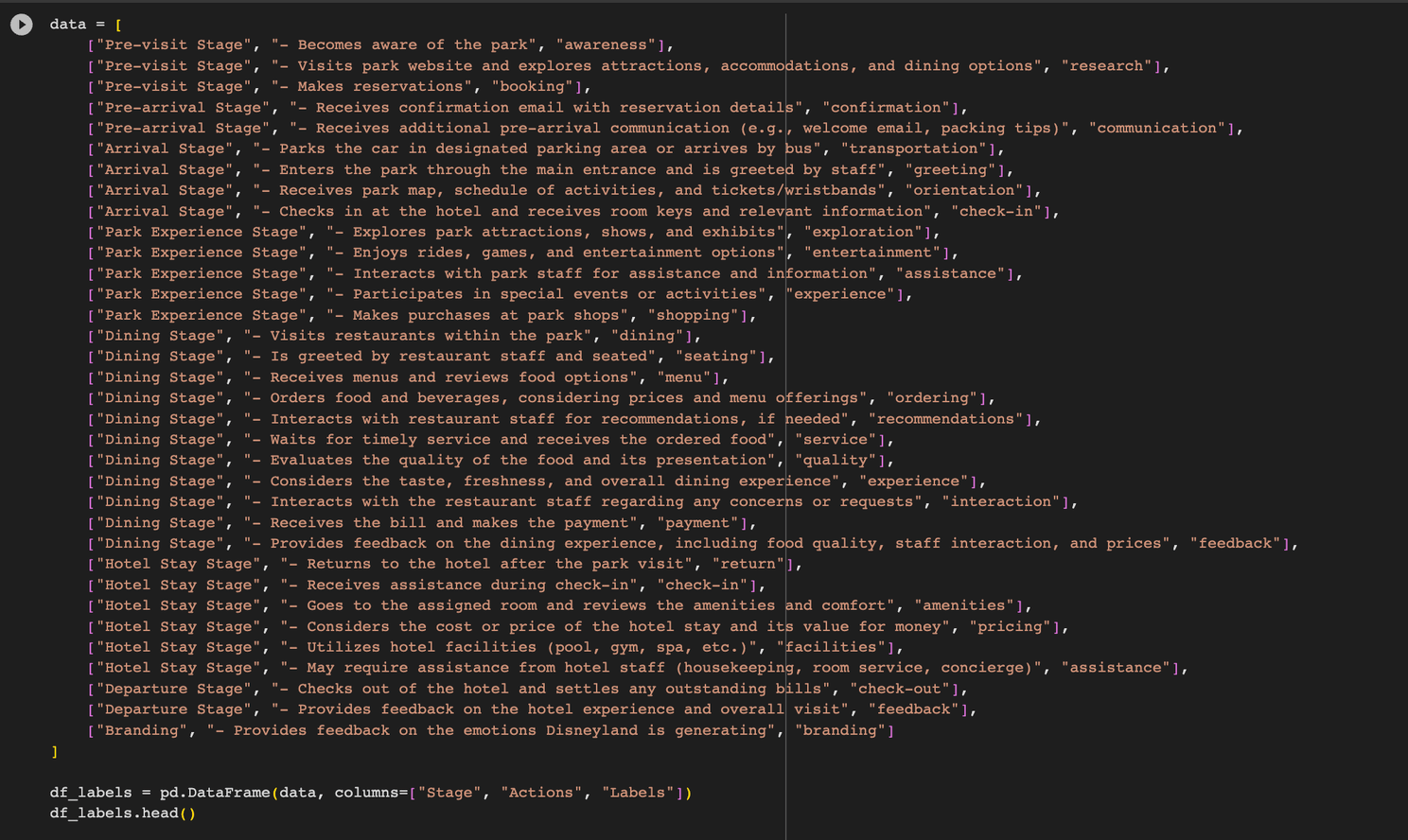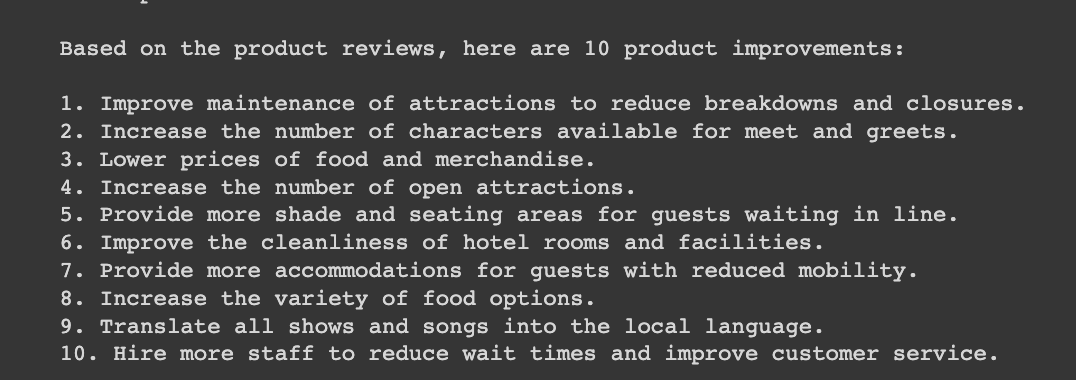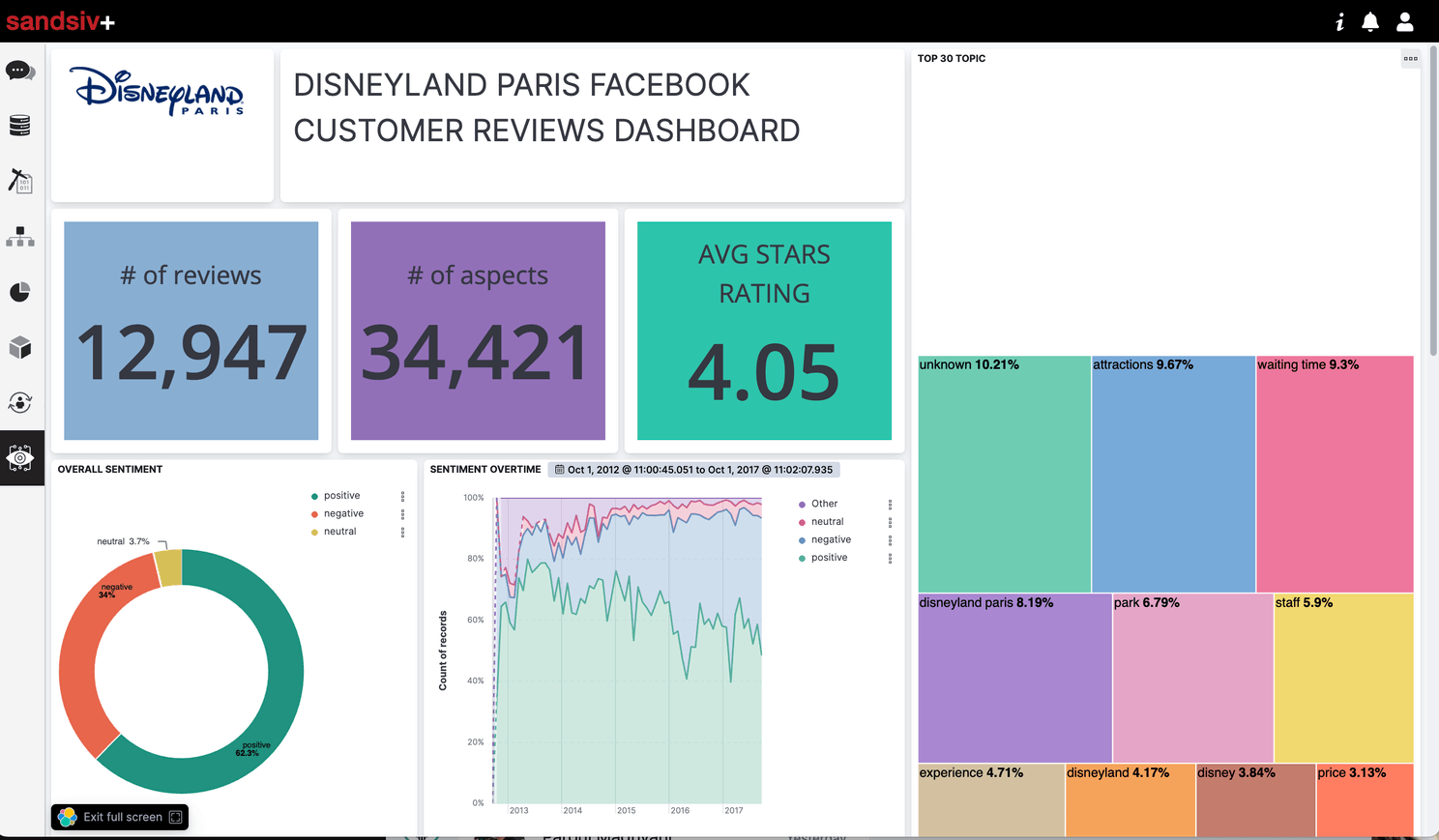If you happened to miss Part 1 of this series, worry not! Simply CLICK HERE to jump in the time machine and travel back four years. Let’s revisit the beginnings of our journey into the intricate world of guest reviews at Disneyland Paris.
In 2019, I embarked on a data-driven analysis of Disneyland Paris’ guest reviews. Analyzing 15,928 guest experiences from Facebook, TripAdvisor, Google, and Instagram with the help of sandsiv+, I set out to decode the guest experience. It’s been a while since then, and I’m grateful for your patience. Today, I am thrilled to present the second part of this series.
Here’s something exciting – I have developed a method to identify the obstacles in Disneyland Paris’ customer journeys in under 60 seconds! Yes, you read it right. And the excitement doesn’t stop there. The interactive dashboard I’ve designed will not only point out the crucial areas that need improvement but will also suggest how to address them.
Furthermore, I will highlight the potential business benefits that Disneyland Paris, or indeed any company, can reap by implementing these changes. I’ve planned a series of articles, probably five in total, beginning with a discussion on the business advantages and concluding with a deep technical conversation.
The business benefits
Over the past decade, I’ve been on a quest to unearth specific business benefits, a journey often shared with my esteemed colleague Adriana Piazza. Adriana has long held a vision for CX Analytics; she imagines a world where a simple button press triggers an advanced technology that can effortlessly extract the sentiment and the topics associated with it.
A recent conversation with another colleague, Mirko Buonerba, added a new dimension to this vision: what if this seamless process could also pinpoint the exact touchpoint in the customer journey that the customer is referencing? Intriguing, isn’t it?
But why stop there? I thought, what if this intelligent system could automatically formulate a list of pros and cons, sift through to identify the top ten initiatives for enhancing customer experience, and then shortlist the five most impactful projects for implementation, factoring in the company’s capacity to execute them? This would result in a dynamic, storytelling dashboard – a magical tool for insights.
The compelling business advantages of this approach are evident:
- Speed to market: Imagine transforming a complex analytics process that once took data scientists weeks to execute into a streamlined operation that merely takes minutes.
- Simplified model training: With the advent of Large Language Models (LLMs), we can say goodbye to the need for vast volumes of data. A few-shot approach to Aspect-Based Sentiment Analysis (ABSA) and Customer Journey Identification is all you need.
- Reduced dependency on pre-labeled data: With just 20-30 examples to demonstrate the concept, an LLM can take over from there.
- Automated initiative reporting: The AI would generate a comprehensive report outlining customer experience (CX) management initiatives.
- Empowering CX Managers: By saving time on analytics, CX Managers can focus on what truly matters – enhancing the customer experience.
Does this sound like science fiction? I assure you, it’s not. Over the past six weeks, my sole focus has been on turning this vision into reality. The future of CX analytics is here, and it’s incredibly exciting!
So, buckle up for an exciting ride. As the saying goes, “Fasten your seatbelts, it’s the law!” but in this case, it’s also for a thrilling journey into customer experience insights.
The three main components
Ready to revolutionize the world of customer experience analytics? I have three secret ingredients to share:
- Aspect-Based Sentiment Analysis (ABSA)
- Instant Customer Journey Detection
- A robust Large Language Model, with my preference being OpenAI GPT-3.5-TURBO.
Imagine combining these three powerful components within the sandsiv+ platform. That’s exactly what I’ve done, and it has led to a seismic shift in the Customer Experience (CX) landscape.
Let’s dive in and unpack these elements.
1. Aspect-Based Sentiment Analysis (ABSA):
ABSA is a more nuanced form of sentiment analysis. It’s not just about discerning positive, negative, or neutral sentiments. It drills down to extract sentiments about specific aspects of a product or service. For instance, a customer may love Disneyland Paris’ thrilling rides (positive sentiment) but dislike the long queues (negative sentiment). ABSA allows us to understand this granularity and provides more actionable insights for specific improvements.
2. Cross-Referencing ABSA with Customer Journey Touchpoints:
Once we’ve used ABSA to analyze the sentiments about different aspects of the experience, we can then map these sentiments to different touchpoints in the customer journey. This process enables us to understand exactly where in the journey the customer had a positive or negative experience.
For example, if negative sentiments are associated with long queues, we can correlate this with the touchpoints of ‘Entry’ or ‘Ride Access.’ This detailed insight allows for focused improvements at specific stages of the customer journey.
3. Utilizing a Large Language Model – GPT-3.5-TURBO:
Language models like GPT-3.5-TURBO are instrumental in processing vast amounts of textual data. They are adept at understanding context, and sentiment, and can generate human-like text. For our purpose, we could feed customer reviews into the model and ask it to identify key sentiment-laden phrases. For instance, with prompts like:
- “List five key issues mentioned in the reviews.”
- “Summarize the main positive points highlighted by the customers.”
Such prompts can help us quickly extract useful insights from the data and even guide us toward crafting better customer experience strategies. Despite its effectiveness, GPT-3.5-TURBO is cost-efficient, making it a great choice for this purpose.
The secret ingredient
The big orchestrator of the 3 previously mentioned elements is an open-source project by Harrison Chase backed up by Sequoia Capital and Benchmark. The name of the new Python kid on the block is LangChain. What LangChain is?
LangChain is a toolkit that makes it easier for developers to build applications that utilize large language models. These applications can range from chatbots to document analysis and summarization tools, and even code analysis applications.
Ok, can you explain in a less technical language? Imagine that you’re a master chef in a kitchen. You have a bunch of ingredients at your disposal and you want to create a variety of dishes. However, preparing each dish individually from scratch can be time-consuming and complex.
That’s where your recipe book comes in. This recipe book isn’t an ordinary one; it’s a special book that not only contains recipes but also has magical abilities. It can help you combine the ingredients in the most efficient way, guide you through the cooking process, and even perform some of the steps for you. This magical recipe book is like the LangChain framework.
The dishes you’re preparing are like the applications or software. The ingredients are the different components or data that you need to build these applications.
Now, imagine that some of the dishes you want to create require a special ingredient: a spice called ‘Language Model’. This spice has the unique ability to understand and generate human-like text.
The magical recipe book (LangChain) is particularly good at working with this special spice (Large Language Models). It makes it much easier for you to create dishes (applications) that have the special flavor and abilities of the ‘Language Model’ spice.
So, in short, LangChain is like a magical recipe book that helps chefs (developers) create a variety of dishes (applications) more efficiently, especially those dishes that require the special ‘Language Model’ spice.
The expected results
Delivering exceptional customer service in today’s highly competitive market is dependent on our ability to gather, interpret, and act on insightful data. This revolutionary approach allows us to understand our customers better and align our services with their needs and wants.
In this light, our prime focus is to streamline a robust mechanism that accurately categorizes key topics and gauges the associated sentiments. This comprehensive ranking enables us to pinpoint the main concerns of our customers precisely and promptly address these issues.
Moreover, we are establishing a definitive connection to the customer’s journey touchpoint. This strategy gives us an accurate understanding of customer behavior and interaction with our brand. It provides insights into the stages of the customer journey that can be optimized for a better overall experience.
An exciting part of our data exploration journey is the multidimensional analysis of this information. By slicing and dicing our data across various axes such as time, park area, and different stages of the customer journey, we will gain a richer perspective of our customers’ experiences. This in-depth analysis will enhance our ability to meet our customer’s needs more effectively and improve their overall experience with us.
Our goal is to leverage these insights to create a dynamic, responsive, and customer-centric approach. We are utilizing an innovative combination of technologies to better understand customer sentiments and needs. Central to this approach is the use of OpenAI’s GPT-4 API, integrated with sandsiv+, Elastic Stack and LongChain.
OpenAI’s API, renowned for its advanced natural language understanding, provides a powerful tool for accurately running Aspect Based Sentiment Analysis. By analyzing and interpreting the subtleties in the text data we gather from customer interactions, the API aids us in understanding the emotional context of the different topics expressed by the customer. This ability to categorize topics based on sentiment gives us deeper insight into how our customers truly feel about their experiences with us.
In combination with sandsiv+ we can harness this sentiment data and link it with specific touchpoints in the customer journey. sandsiv+ allows us to collect, analyze, and manage customer feedback in real-time, giving us the ability to respond to and address issues promptly. It also offers advanced customer journey mapping, which when combined with the sentiment analysis from the OpenAI API, helps us clearly identify pain points and areas of improvement within the customer’s interaction with our services.
The final piece of the puzzle is the integration with Long Chain, a solution that enables efficient data organization and multi-dimensional analysis. With Long Chain, we can slice and dice the sentiment and journey data across various parameters such as time, park area, or stages in the customer journey. This comprehensive and flexible approach to data analysis enables us to gain a fuller picture of our customers’ experiences and helps guide our decisions for improving our services.
In light of this, our primary objective is to build a robust mechanism, which seamlessly integrates these technologies to accurately categorize key topics and measure the associated sentiments. We believe that by leveraging the power of the OpenAI API, sandsiv+, and LongChain, we will be able to better understand our customers, improve their journey, and ultimately, deliver a superior customer experience.
Aspect-Based Sentiment Analysis
I mentioned before ABSA it’s not just about discerning positive, negative, or neutral sentiments. It drills down to extract sentiments about specific aspects of a product or service. Let’s quickly see how it works combining an LLM. In our case OpenAI GPT-3.5-Turbo.

The sentence we want to test is: “Just arrived at the park. The hotel is good and clean. There are long lines in front of the attractions.” Here is the result:

As you can read, the result is quite impressive. The model identifies immediately the topics, the sentiments associated with the topics, and the segment (part of the sentence related to the topic and the sentiment).
The Customer Journey Mapping
An integral part of our strategic approach is linking Aspect-Based Sentiment Analysis (ABSA) results to our Customer Journey Mapping. This integration will provide a deeper understanding of customer sentiments at each touchpoint in their journey.
Let’s elaborate on how this works. Using the OpenAI API, we analyze customer feedback to extract specific topics and their associated sentiments. Next, we align these ABSA results with the stages of the customer journey. Each piece of customer feedback is classified and matched to the corresponding stage in the journey, allowing us to understand the sentiment and key concerns in the context of the customer’s interaction with us.
But, how do we go about it if we do not have a customer journey mapped out, say for Disneyland Paris? This is where the immense potential of the OpenAI GPT-3.5-TURBO comes into play.
Utilizing the powerful language model of OpenAI GPT-3.5-TURBO, we can create a customer journey map for Disneyland Paris. The AI will consider various possible touchpoints, from the initial planning and booking process, to arriving at the park, enjoying the attractions, engaging with staff, and even post-visit experiences. It will take into account the potential interactions, expectations, and emotions at each stage.
This AI-constructed journey map, when combined with ABSA results, will give us a holistic view of our customer’s experiences. We can identify the stages where the sentiment is particularly positive or negative, and understand what factors are contributing to these sentiments. Consequently, we can strategize to enhance the positive elements and rectify the negative ones, improving the overall customer experience at Disneyland Paris.
The amalgamation of OpenAI GPT-3.5-TURBO, ABSA, and Customer Journey Mapping thus empowers us to deliver superior, tailored experiences that truly resonate with our customers. Let’s harness this innovative approach to make every customer’s journey unforgettable!

Using the above output as an example for our prompt, we can create a specific prompt for the Few Shots chains to analyze the segments and understand the touchpoint. Here is a test result for your convenience:

The Story Telling Dashboard
The future of business intelligence and analytics is not just about visually appealing graphs and charts; it’s about creating an interactive, engaging dialogue with the data. To elevate our analytics capabilities, we’re proposing the use of a conversational, AI-powered dashboard that understands and communicates in human language.
This novel dashboard will serve as a dynamic interface, transcending the conventional static displays. Using advanced natural language processing capabilities, it will not only visualize data but also interpret it in a relatable, human-like manner. This facilitates a deeper comprehension of the insights generated, making them more accessible and useful to all members of your organization.
One of the key features of this conversational dashboard is its ability to formulate and present a list of pros and cons based on the analyzed data. For instance, analyzing customer feedback might highlight the advantages and disadvantages of a specific park area or customer touchpoint at Disneyland Paris.
Moreover, our innovative dashboard will generate a list of recommendations for projects aimed at enhancing customer satisfaction. Using ABSA results linked with customer journey mapping, will suggest initiatives that can rectify identified issues and amplify positive aspects of the customer experience.
To help in prioritizing these initiatives, the dashboard will rank them based on impact and effort criteria. Assessing the potential benefits of each project against the resources required, it will aid in making informed decisions about which initiatives to pursue first.

Imagine a dashboard that not only shows you graphs but also provides explanations and recommendations in plain language, facilitating a more insightful understanding of the data and empowering you to make better decisions. This is what we aim to achieve with our AI-powered, conversational analytics dashboard. It’s about transforming data into actionable insights, through the power of AI and human-like dialogue.
Part 2 conclusions
Throughout our exploration, I’ve discussed the integration of cutting-edge technologies like OpenAI’s GPT-4 API, sandsiv+, LangChain, and ABSA in conjunction with AI-powered Customer Journey Mapping. This innovative approach paves the way for a comprehensive understanding of our customers’ experiences. It aids in identifying key pain points, uncovering opportunities for improvement, and ultimately enhancing the overall customer experience.
The upcoming venture I’m particularly excited about is the creation of a conversational, AI-powered dashboard. This promises a transformative leap in how we interact with and interpret our data. By translating complex datasets into accessible, meaningful dialogues and actionable insights, I’m not just enhancing our understanding of the customer journey but also facilitating informed, data-driven decision-making across our organization.
Coming soon in the next episode of this Disneyland Paris series
So, what’s next on our journey? I am thrilled to announce that my upcoming article will delve deeper into the workings of the proposed conversational dashboard. I’ll explore its unique features, demonstrate its potential for enhancing our analytics capabilities, and show you how it can revolutionize the way we understand and utilize our data.

Stay tuned for my next article, where I will unveil this exciting tool and show how it makes data analytics more interactive, insightful, and actionable than ever before. Let’s look forward to a future where our dashboards don’t just show us data, but also talk to us, guiding us toward smarter, more impactful decisions.
